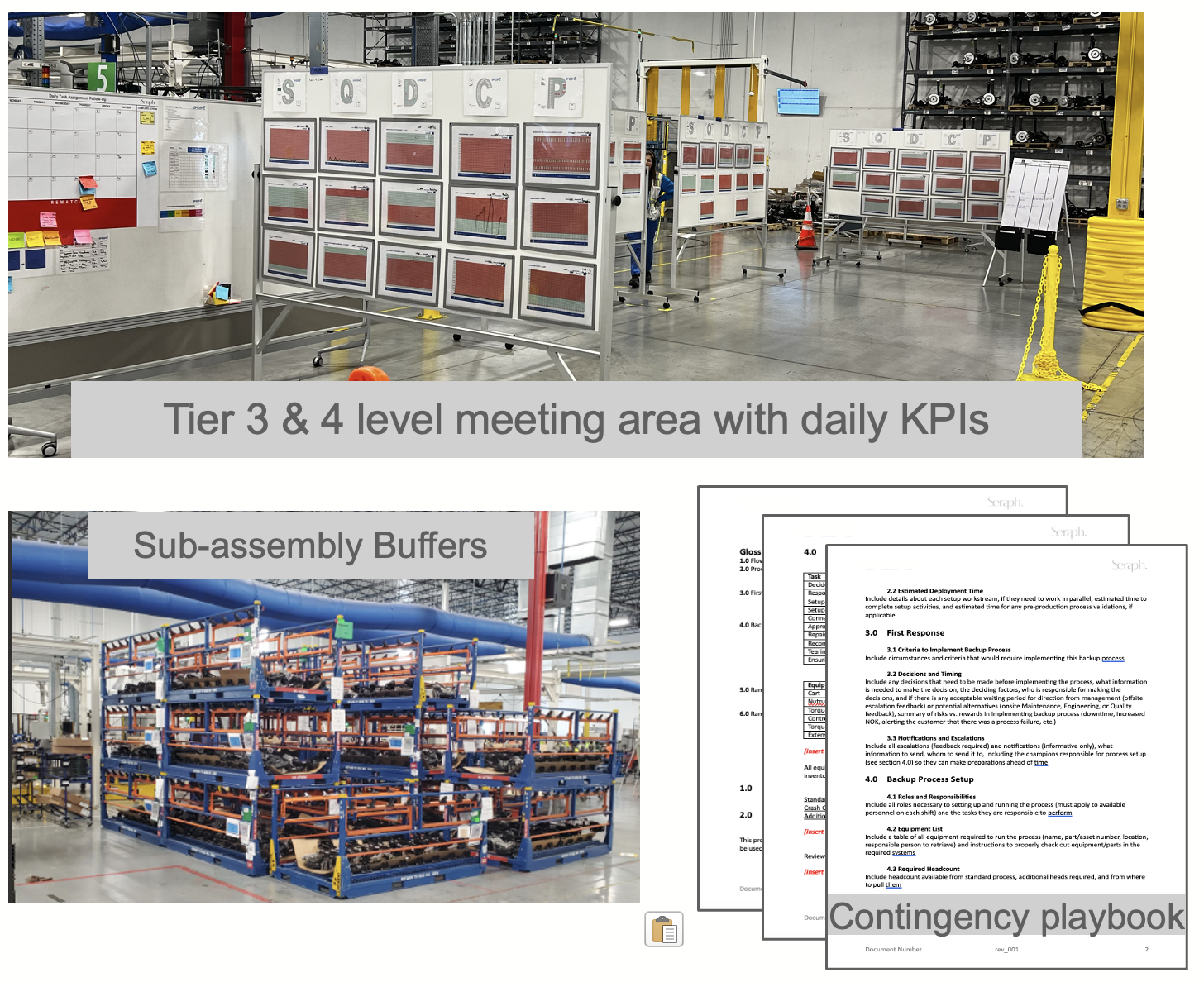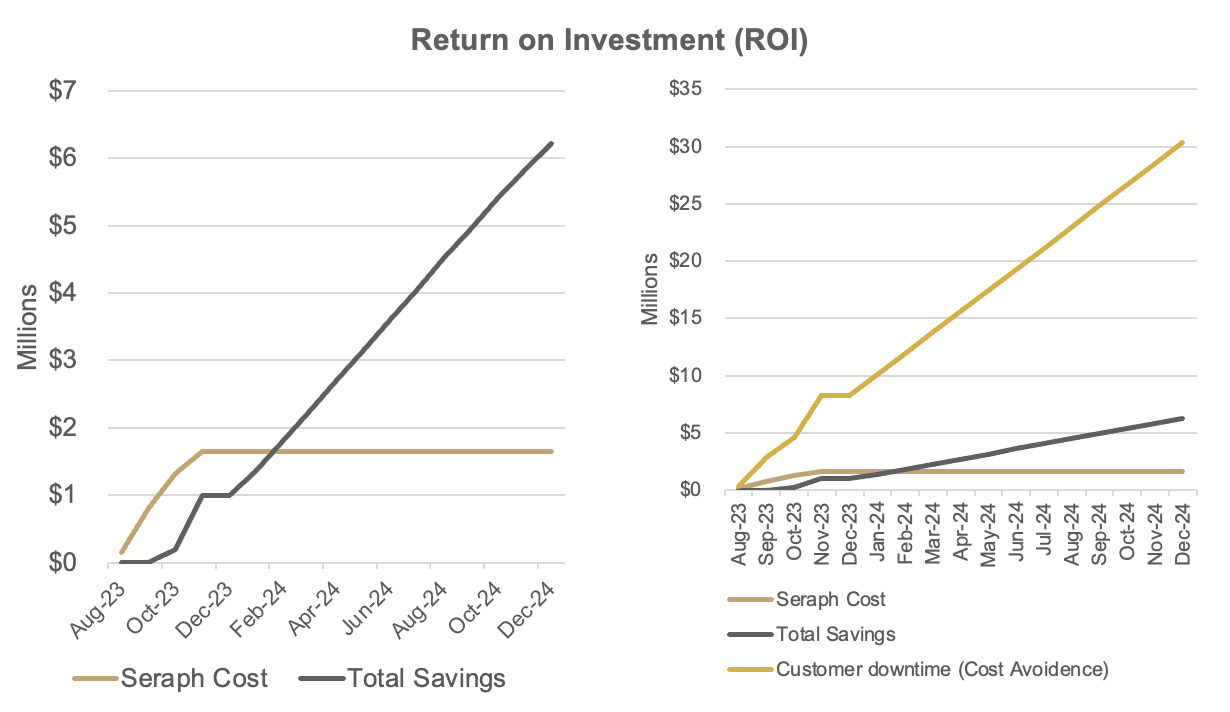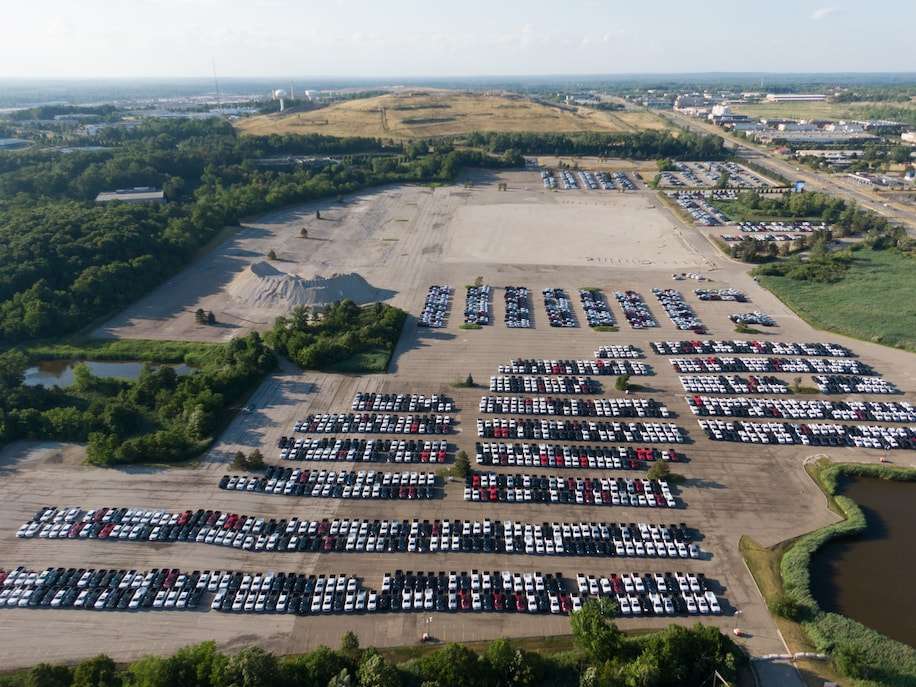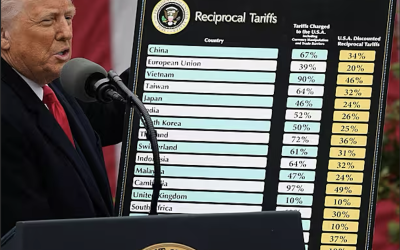INDUSTRY: Automotive Manufacturing
SERVICES: Assessment. Production. Operations. Staffing. Engineering and Maintenance. Quality.
Situation.
A tier one automotive supplier was shutting down their customer due to low JPH (Jobs per Hour) performance caused by downtime, scrap-rework, and performance efficiency. Seraph’s assessment uncovered specific areas to target to improve JPH and reduce customer downtime at the JIS (Just in Sequence) plant.
ACTIONS.
3 key work packages:
WORK PACKAGE 1 |
Recovery Management |
Objective: Improve production output to required RPH 45 to appropriate targeted headcount. Deliverables: •Managed the turnaround project to a sustainable operating cadence. •Supported plant manager and local leadership team. •Evaluated organization, executed structural recommendations and competency evaluations. |
WORK PACKAGE 2 |
Production Readiness |
Objective: Reduced downtime occurring at the customer by increasing JPH and performance efficiency. Deliverables: •Trained frontline leadership. •Increased production to requirement while delivering desired quality. •Deployed daily management system to drive increase in JPH from 27 to 45. |
WORK PACKAGE 3 |
Engineering / Maintenance and Quality |
Objective: Established an efficient equipment maintenance and contingency system, minimized downtime, reduced scrap and first pass yield to target levels. Deliverables: •Developed contingency plans for all assembly processes. •Developed a review process to improve PM (Preventative Maintenance) activities. •Reduced rework and scrap. •Developed a robust process for spare parts management. |
Key Improvements.
- Identified and supported improvements in management shortcomings, gaps and competency issues.
- Defined KPIs that drove operations toward the JPH and quality targets, making these visible on the floor and reviewed daily in tiered meetings.
- Reduced headcount by identifying ways to reduce over budget resources, while defining needed RTR (Required To Run) to reach required JPH of 45 and then 52.
- Revised work instructions to reflect best methods to achieve targeted JPH.
- Transitioned subassemblies away from building to sequenced call-offs, to building to a managed buffer feeding the main production line.
- Updated and implemented standard escalation process related to a JIS operation.
- Contingency playbook created which included an implementation project action plan and timeline for each station and process.
- Used machine data to create paretosto identify top issues causing scrap and rework to drive permanent improvements for elimination of top issues.

RESULTS.

- Seraph reduced target line headcount by 3.8% and overall headcount by 6.2%.
- JPH increased by 44.4%, maximim JPH per hour increased by 43.9%*.
- *JPH numbers were not higher due to limited number of call offs.
- Plant downtime decreased by 63%.
- Customer average vehicles lost decreased by 100% when comparing the 4 weeks before Seraph’s arrival to the last 4 weeks of the project.






